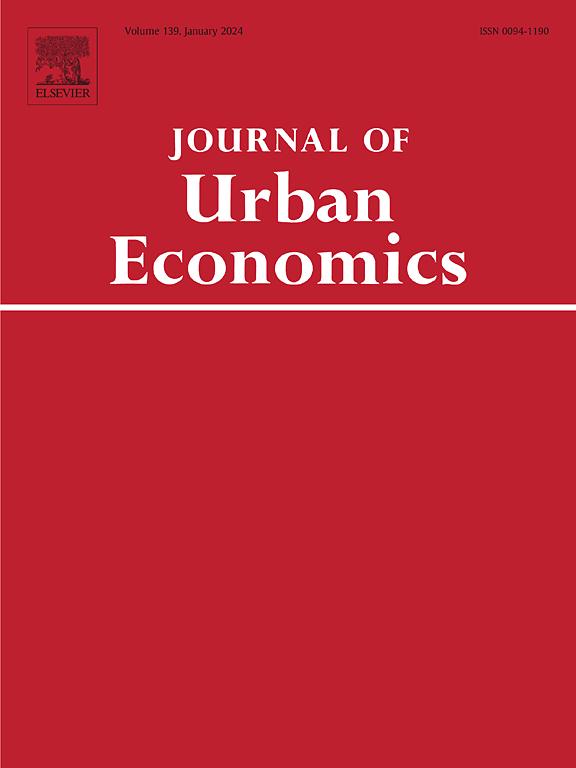住宅分区对美国房地产市场的影响
IF 4.8
1区 经济学
Q1 ECONOMICS
引用次数: 0
摘要
我构建了一个新的全国性数据集来衡量美国住宅分区的严格程度,并检查其对住房生产、价格和人口分类的影响。首先,我开发并实现了一个结构断裂检测算法来推断最小批量规则。该数据集涵盖了以核心为基础的统计区域内的16,000多个地方管辖区,包括跨管辖区和辖区内分区严格程度的变化。我发现,18.5%的独户住宅建筑在最小地块规模的门槛上捆绑在一起,这表明这些分区要求对很大一部分独户住宅开发具有约束力。其次,我估计了这些法规对住房市场结果的影响,利用城市边界地区附近分区区的差异。结果显示,最小宅地面积限制增加了住宅面积、销售价格和租金。此外,限制性分区不成比例地吸引了高收入白人房主,强化了住宅隔离的模式。本文章由计算机程序翻译,如有差异,请以英文原文为准。
The effects of residential zoning in U.S. housing markets
I construct a new nationwide dataset to measure the stringency of residential zoning in the United States and examine its effects on housing production, prices, and demographic sorting. First, I develop and implement a structural break detection algorithm to infer minimum lot size regulations. The dataset spans over 16,000 local jurisdictions within Core-Based Statistical Areas, capturing both cross-jurisdictional and within-jurisdictional variation in zoning stringency. I find that 18.5 percent of single-family home constructions bunch at the minimum lot size threshold, suggesting that these zoning requirements are binding for a substantial share of single-family development. Second, I estimate the effects of these regulations on housing market outcomes, exploiting variation across nearby zoning districts within municipal border regions. The results show that minimum lot size regulations increase home sizes, sales prices, and rents. Moreover, restrictive zoning disproportionately attracts high-income white homeowners, reinforcing patterns of residential segregation.
求助全文
通过发布文献求助,成功后即可免费获取论文全文。
去求助
来源期刊

Journal of Urban Economics
Multiple-
CiteScore
10.60
自引率
4.80%
发文量
64
期刊介绍:
The Journal of Urban Economics provides a focal point for the publication of research papers in the rapidly expanding field of urban economics. It publishes papers of great scholarly merit on a wide range of topics and employing a wide range of approaches to urban economics. The Journal welcomes papers that are theoretical or empirical, positive or normative. Although the Journal is not intended to be multidisciplinary, papers by noneconomists are welcome if they are of interest to economists. Brief Notes are also published if they lie within the purview of the Journal and if they contain new information, comment on published work, or new theoretical suggestions.
 求助内容:
求助内容: 应助结果提醒方式:
应助结果提醒方式:


